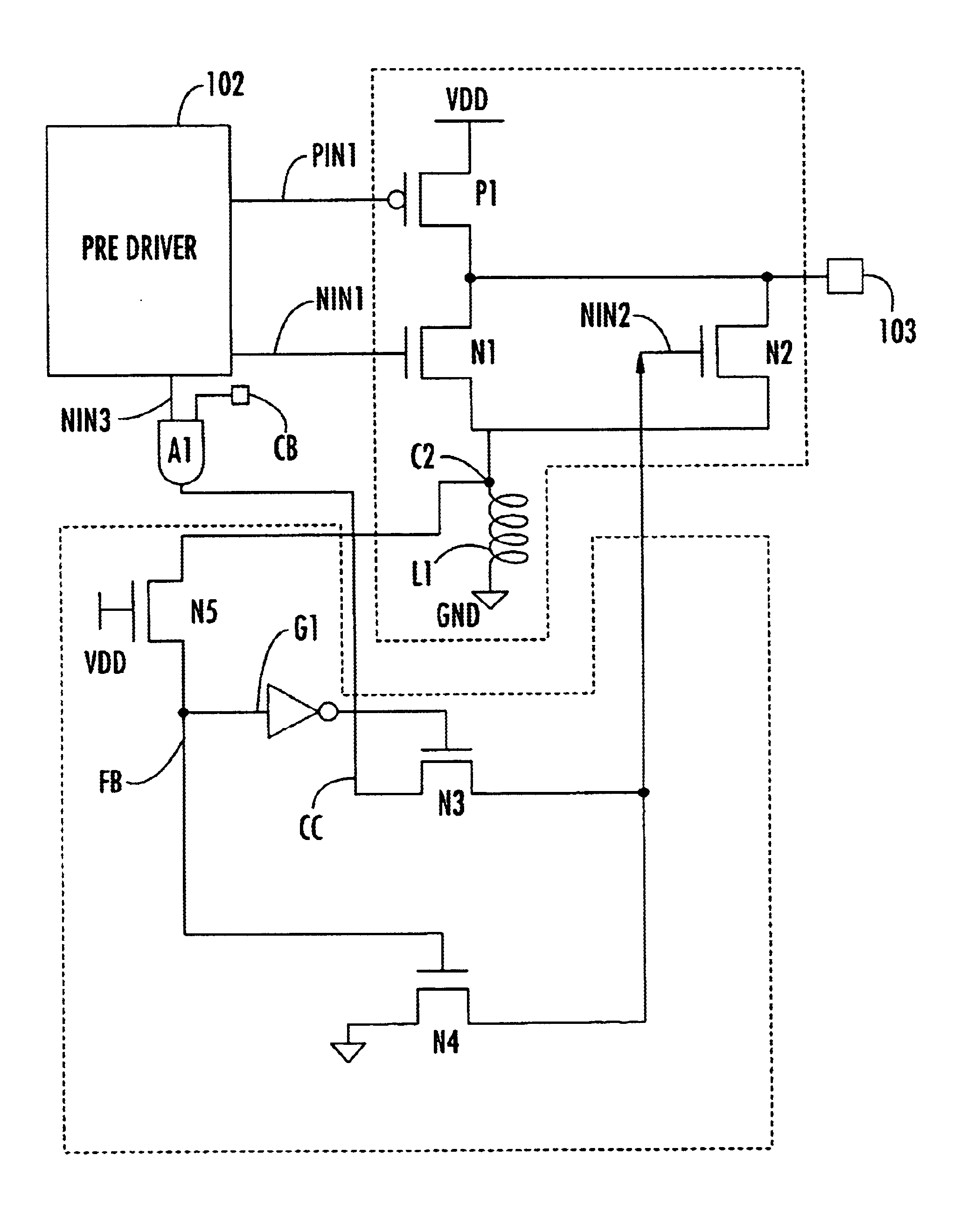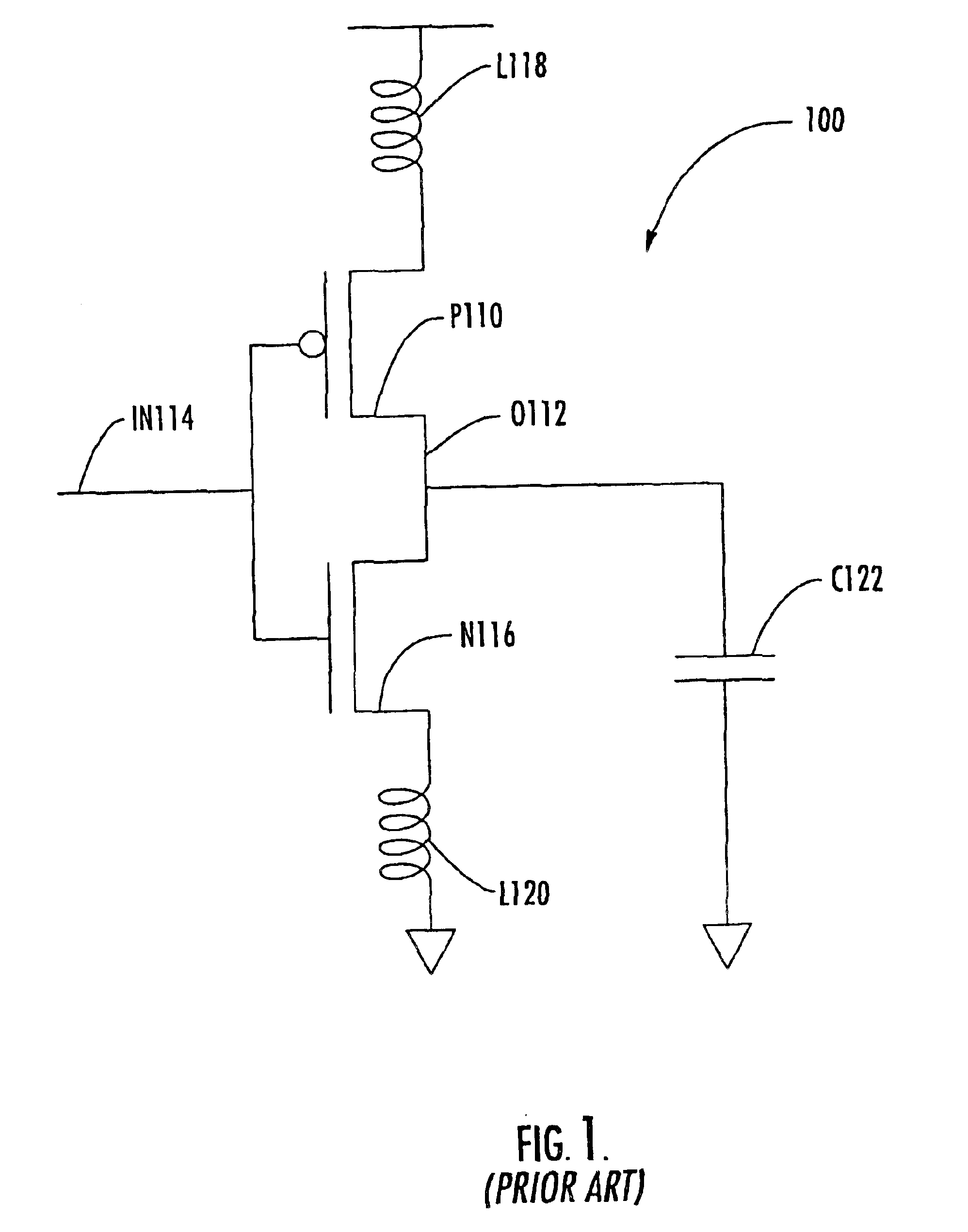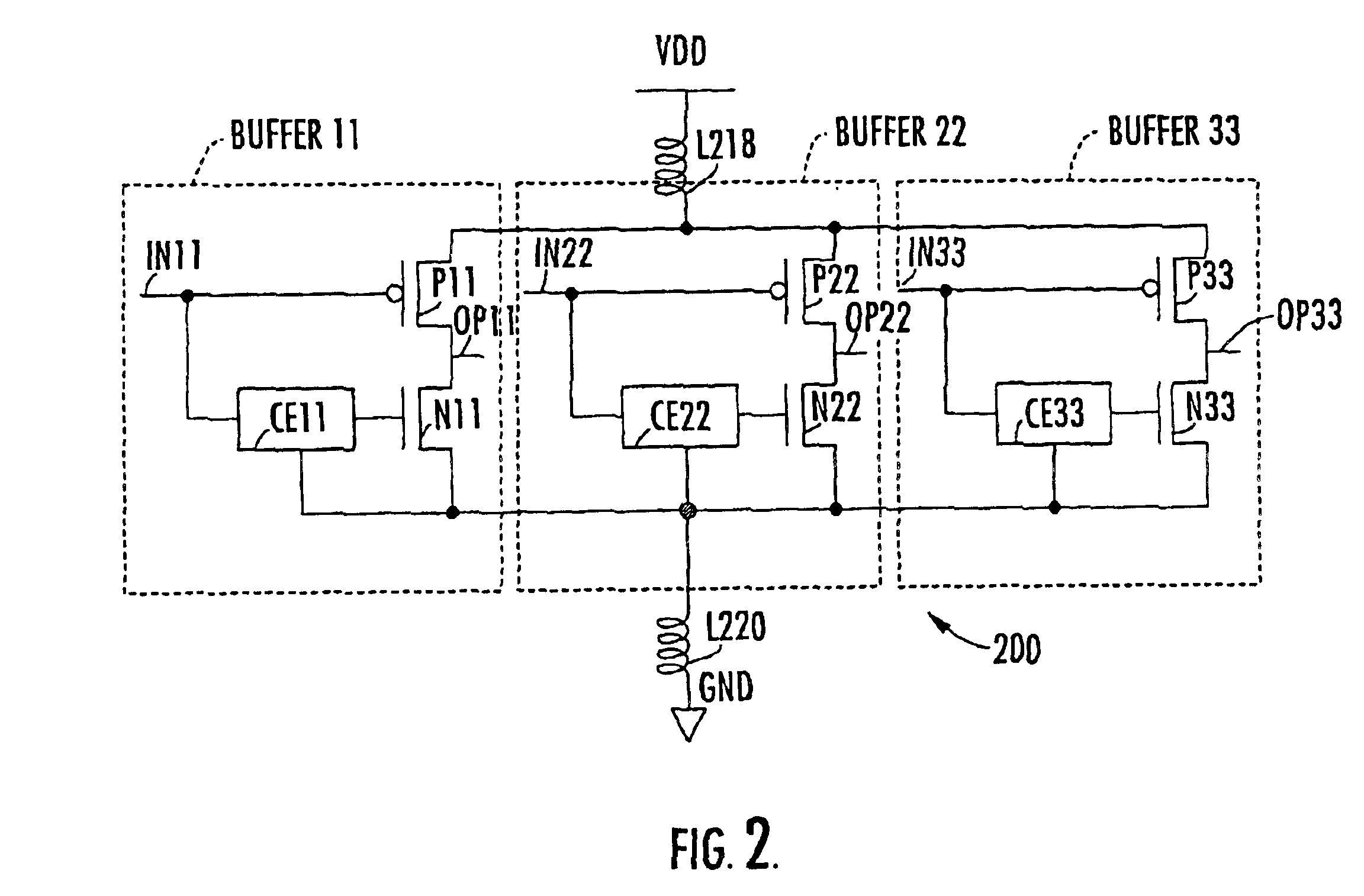CMOS buffer with reduced ground bounce
a buffer and ground technology, applied in the field of integrated circuits, can solve the problems of increasing the number of ground pins on the chip, false triggering, ground bounce, etc., and achieve the effect of reducing ground boun
- Summary
- Abstract
- Description
- Claims
- Application Information
AI Technical Summary
Benefits of technology
Problems solved by technology
Method used
Image
Examples
Embodiment Construction
The present invention will now be described more fully hereinafter with reference to the accompanying drawings, in which preferred embodiments of the invention are shown. This invention may, however, be embodied in many different forms and should not be construed as limited to the embodiments set forth herein. Rather, these embodiments are provided so that this disclosure will be thorough and complete, and will fully convey the scope of the invention to those skilled in the art. Like numbers refer to like elements throughout, and prime notation is used to indicate similar elements in alternative embodiments.
Referring to FIG. 2, three output buffers BUFFER11, BUFFER22, and BUFFER33 in accordance with the invention are connected between common supplies VDD and GND through package inductances on the VDD and GND pins illustratively represented as inductors L218 and L220, respectively. The inputs to the buffers are IN11, IN22, and IN33, respectively, and the outputs are OP11, OP22, and O...
PUM
 Login to View More
Login to View More Abstract
Description
Claims
Application Information
 Login to View More
Login to View More - R&D
- Intellectual Property
- Life Sciences
- Materials
- Tech Scout
- Unparalleled Data Quality
- Higher Quality Content
- 60% Fewer Hallucinations
Browse by: Latest US Patents, China's latest patents, Technical Efficacy Thesaurus, Application Domain, Technology Topic, Popular Technical Reports.
© 2025 PatSnap. All rights reserved.Legal|Privacy policy|Modern Slavery Act Transparency Statement|Sitemap|About US| Contact US: help@patsnap.com



